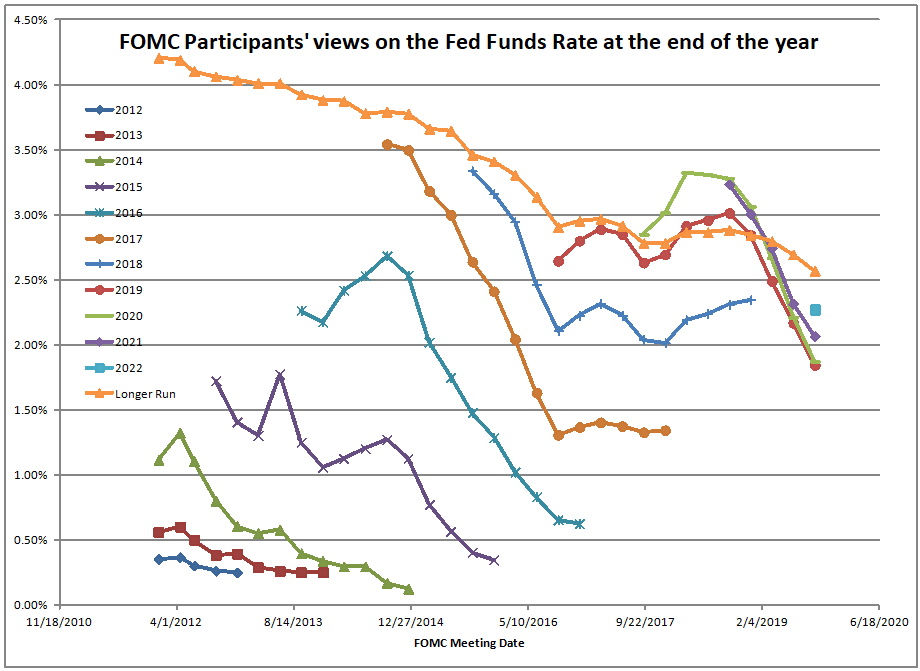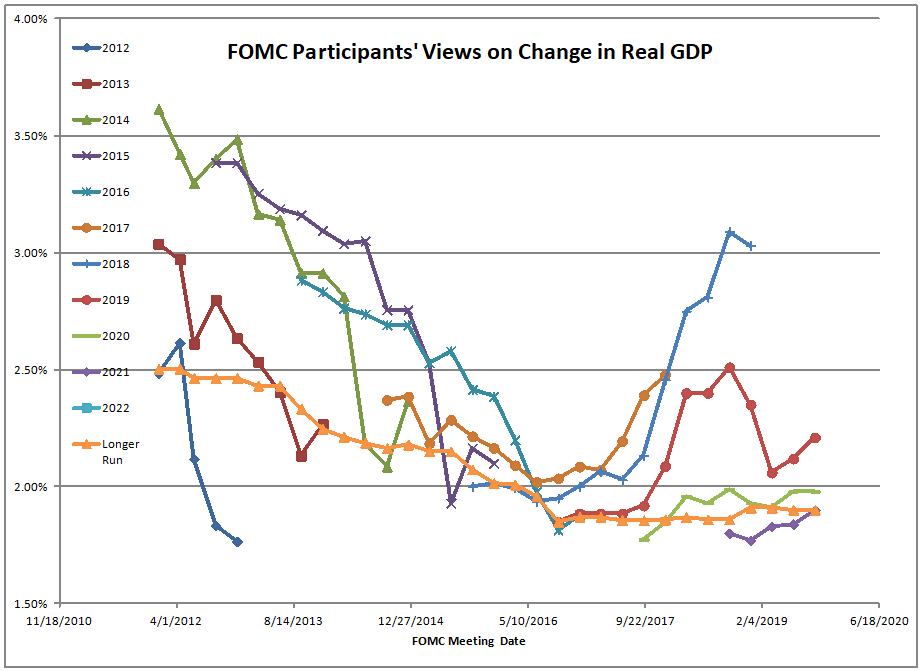
It’s been interesting watching the views on the Fed regarding policy change over the last year and a half. Their views on GDP growth and Fed funds reversed as they followed their trailing indicators. After all, what economic variable moves later than unemployment?
Have a look at the rest of the graphs:



If you have been looking at my Twitter feed, would know that I am a fan of using the yield curve to target monetary policy. The yield curve does two things moderately well.
- It gives the view of market participants as to where interest rates will go in the future. That doesn’t mean the forecast is right, but it does show what the major players are thinking on average. Call it the wisdom of crowds (of money). This may not forecast all that well, but it is usually closer to accurate than the Fed’s macroeconomic modeling.
- It helps you understand the profitability of banks (and other financial firms). The slope of the front end of the curve is a proxy for the profitability of bank lending. When it is not profitable for banks to lend, they don’t lend as much and the economy slows down.
You could put the Fed on autopilot using a rule that would adjust policy such that the difference between the 10-year Treasury note yield and the 3-month Treasury bill yield is around 0.50%. If the Fed did that, Fed funds would have to be 0.65% lower than now. To keep life predictable, the rule could avoid making changes until the slope of the curve got to 0% (loosen 0.50%) or 1% (tighten 0.50%).
But here’s the problem with a rule like that: I don’t doubt that it would work in the short run. In the long run, the lack of recessions would lead to the situation that we are in now. Debt levels get too high, the economy grows slower, and when the slowdown finally comes with Fed funds near zero, it becomes a crisis like the Great Depression or 2008-9. Too much bad debt. We need recessions to force bad debts to liquidate when there is a small amount of bad debts to reconcile.
Perhaps then policy should force the yield curve to invert once every five years, say with a slope of -0.50%, and hold it there for a year or so.
On the bright side now, the banks are in decent shape. The places that are weak are corporate America, low-income consumers, and the government itself. I expect corporate defaults to be rather stiff in the next recession. I just hope we don’t get a series of sovereign debt crises globally. No telling what that would bring.
One last thought. The Fed has an opportunity to rationalize its asset policy, and move back to a classic set of assets — short maturity Treasuries. They could slowly sell off the Mortgage-backed securities and the Treasuries longer than 5 years and reinvest in shorter Treasuries. As a result, the yield curve would steepen and banks would lend more, lessening the need for monetary policy to loosen.
Anyway, that’s all. The Fed is behind the curve, in more ways than one. Perhaps the economy is picking up a little now — after all, the 30-year Treasury bond yield has been rising.
